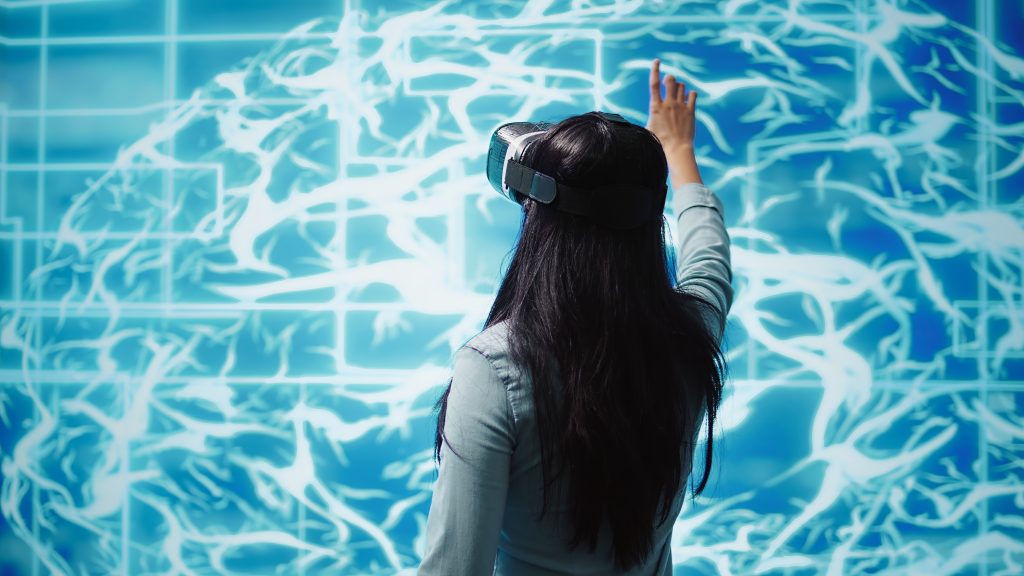In today’s tech-driven world, the relationship between digital spaces and mental architecture is becoming increasingly significant. The way we design and interact with these spaces is doing more than shaping our screens—it’s reshaping how we think. As users navigate dashboards, toggle notifications, or scroll endlessly through feeds, a subtle yet powerful transformation is taking place. The structure and design of digital environments are influencing how we process information, make decisions, and even define mental boundaries.
This isn’t just a UX or productivity issue. It points to a deeper relationship between digital design and cognitive structure—what we can refer to as the intersection between digital spaces and mental architecture.

The Interface as a Mirror of the Mind
Digital spaces are increasingly being built to reflect how our minds prefer to operate—intuitively, efficiently, and with minimal friction. But in doing so, these same environments begin to shape our cognitive patterns.
For instance:
- Tabs and toggles mirror our need to compartmentalize thoughts.
- Push notifications mimic our brain’s alert system but heighten reactivity.
- Infinite scrolling reflects the human desire for novelty—but it also rewires our attention span.
In many ways, the mental models baked into the apps and platforms we use end up dictating how we prioritize, how we multitask, and even how we rest.
A study published in Nature Communications (Wilmer et al., 2022) highlighted that constant digital stimulation may be restructuring attention networks in the brain, particularly in younger users.
Architecture of Attention: Designing for (or Against) Focus
One of the most compelling ways digital spaces influence mental architecture is through attention design. Features like dark mode, minimal interfaces, and focus timers aren’t just UX decisions—they’re responses to cognitive overload.
Platforms like Notion, Linear, and Superhuman are gaining popularity not just for their sleek design, but for their ability to reduce noise. These tools are intentionally structured to:
- Promote linear thought
- Prioritize deep work
- Limit cognitive switching costs
Compare this to older, cluttered dashboards filled with widgets and pop-ups, and the contrast becomes obvious. Digital environments can either support our cognitive load—or sabotage it.
Key Takeaway:
The fewer decisions users need to make while navigating a digital space, the more cognitive bandwidth they retain. This principle is increasingly being baked into product design.
Emerging Trends: From Calm Tech to Spatial Computing
The idea that digital spaces influence mental processes has gained traction in new design movements.
1. Calm Technology
First proposed by Mark Weiser and John Seely Brown in the 1990s, calm tech is designed to stay in the background and only demand attention when absolutely necessary. Modern examples include:
- Smart home devices that adapt silently (e.g., thermostats that learn behaviors)
- Notification systems that reduce instead of increase anxiety
This approach aligns with research from the Harvard Business Review (2023), which found that environments with fewer digital interruptions led to a 43% improvement in task completion and memory recall.
2. Spatial Computing and 3D Interfaces
With Apple’s Vision Pro and Meta’s Horizon Workrooms entering the scene, digital spaces are no longer flat. They’re immersive. This leap introduces a new paradigm—users aren’t navigating pages, they’re navigating rooms.
In spatial computing:
- Files might be “stored” in virtual drawers
- Collaboration happens in simulated spaces
- Digital boundaries mimic physical ones
This could impact how we process spatial memory, how we organize mental categories, and how we conceptualize “workspace” versus “rest space.”
3. Minimalist Operating Systems
Lightweight operating systems like Arc Browser or Linux-based alternatives strip away visual clutter. This mirrors a cognitive desire for simplicity and intentional focus, especially in environments where deep thinking is essential (like software development or academic research).
Cognitive Load Theory and Digital Design
Cognitive Load Theory (Sweller, 1988) states that our working memory has limited capacity. Digital spaces that demand frequent context switching—like multitasking tabs, constant alerts, or poor navigation—saturate this capacity quickly.
What we’re now seeing is a trend toward designing digital systems that acknowledge and work within these limitations:
- Chunking information: breaking content into bite-sized, scrollable segments
- Progressive disclosure: showing users only what they need in the moment
- Context-aware interfaces: apps that predict and adjust based on user behavior
The Nielsen Norman Group (2024) reports that users are more likely to complete tasks in digital environments that visually mimic the hierarchical structure of human memory: categories, subcategories, actions.
How Designers Can Apply This Understanding
If digital design can shape mental processes, it becomes an ethical and creative imperative for product developers and interface designers. Some guiding principles:
- Respect attention – Don’t fragment the user’s focus unless absolutely necessary.
- Design for mental recovery – Offer spaces for pause or mental reset (think Pomodoro integrations or focus modes).
- Mirror human memory – Use hierarchy and flow that mimics how we naturally organize data.
- Reduce decision fatigue – Limit unnecessary options or choices unless user intention is clear.
Are We Outsourcing Mental Architecture?
There’s an open debate: Are digital environments expanding our cognitive capabilities—or slowly replacing our ability to organize thoughts independently?
Apps that track habits, structure workflows, or surface reminders are convenient. But they also nudge us into passive modes of engagement.
- We don’t memorize—Google remembers.
- We don’t plan—calendar tools notify.
- We don’t reflect—algorithms recommend.
This may reduce mental effort, but it also begs the question: what happens to mental architecture when the scaffolding is outsourced?
Conclusion: The Future of Thinking is Interface-Driven
Digital environments are no longer just backdrops to productivity. They’re active participants in how we form, store, and retrieve ideas. As digital design continues to evolve—especially with AI interfaces and augmented reality—we’re entering an era where mental architecture isn’t just reflected in digital spaces; it’s co-constructed by them.
Whether this leads to improved clarity or digital dependency will depend on the choices made by both users and designers.
References
- Wilmer, H. H., Sherman, L. E., & Chein, J. M. (2022) Nature Communications. Available at: https://www.nature.com (Accessed: 23 June 2025).
- Harvard Business Review (2023) Managing Your Attention in the Digital Age. Available at: https://hbr.org (Accessed: 23 June 2025).
- Nielsen Norman Group (2024) Cognitive Load in User Interface Design. Available at: https://www.nngroup.com (Accessed: 23 June 2025).






